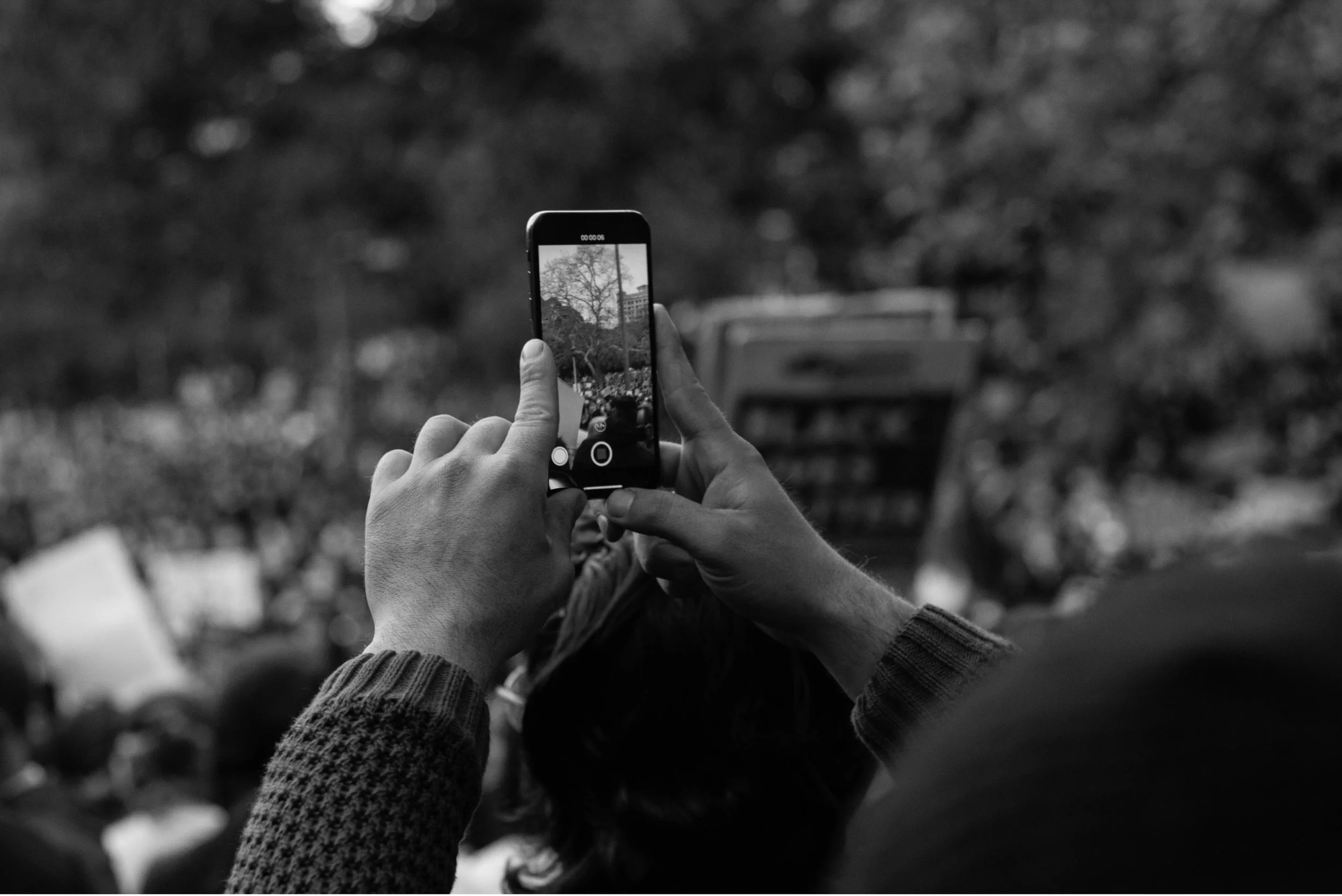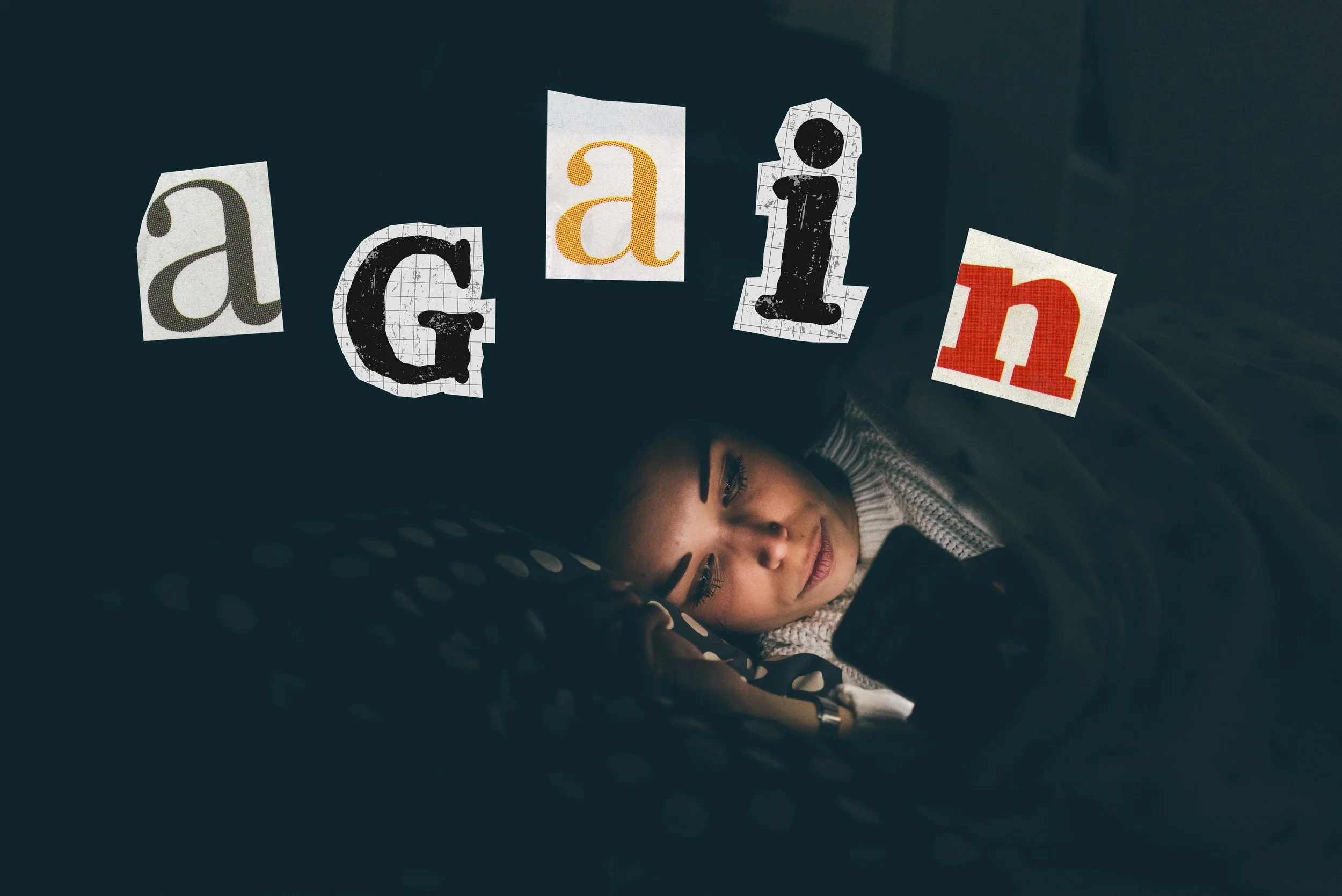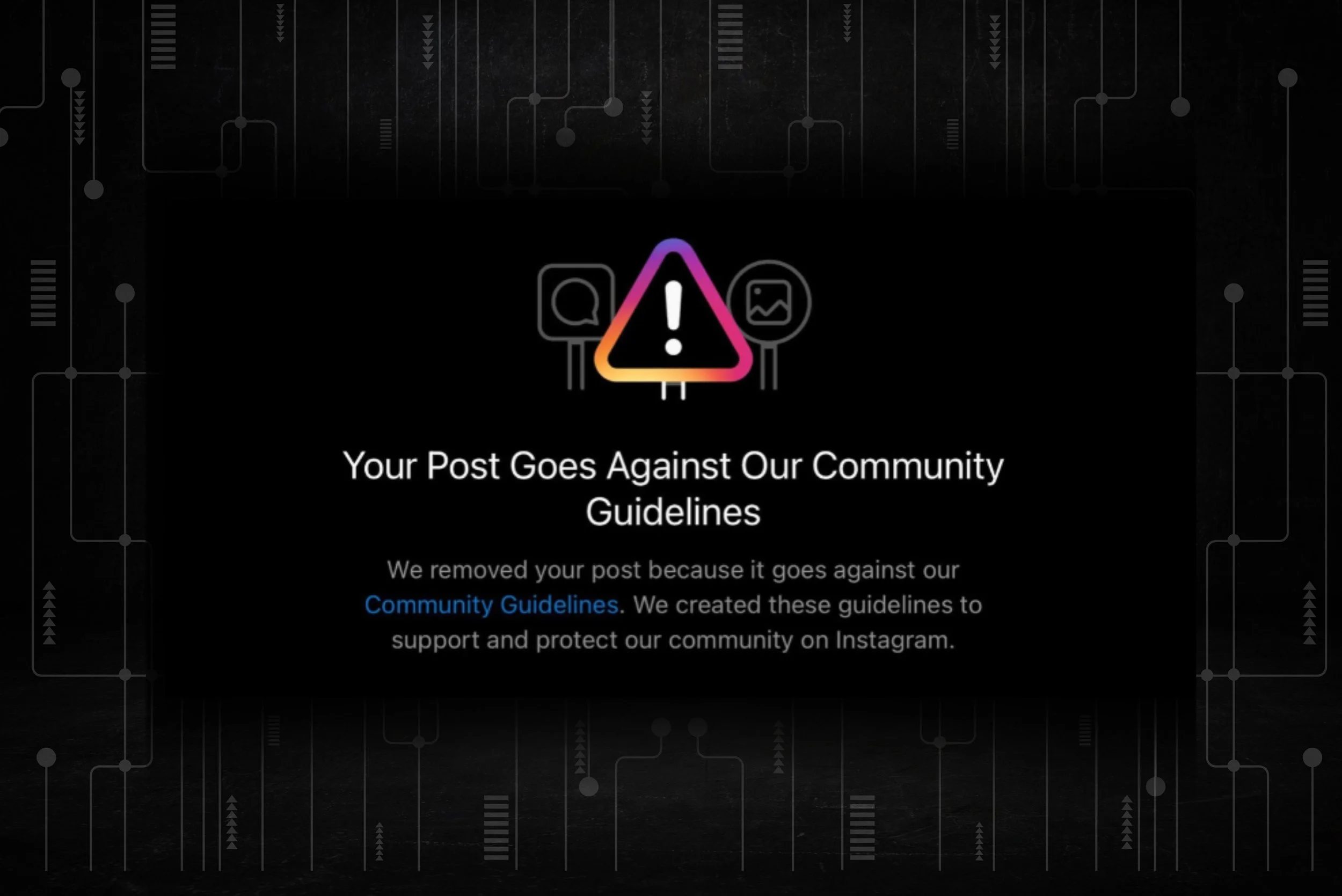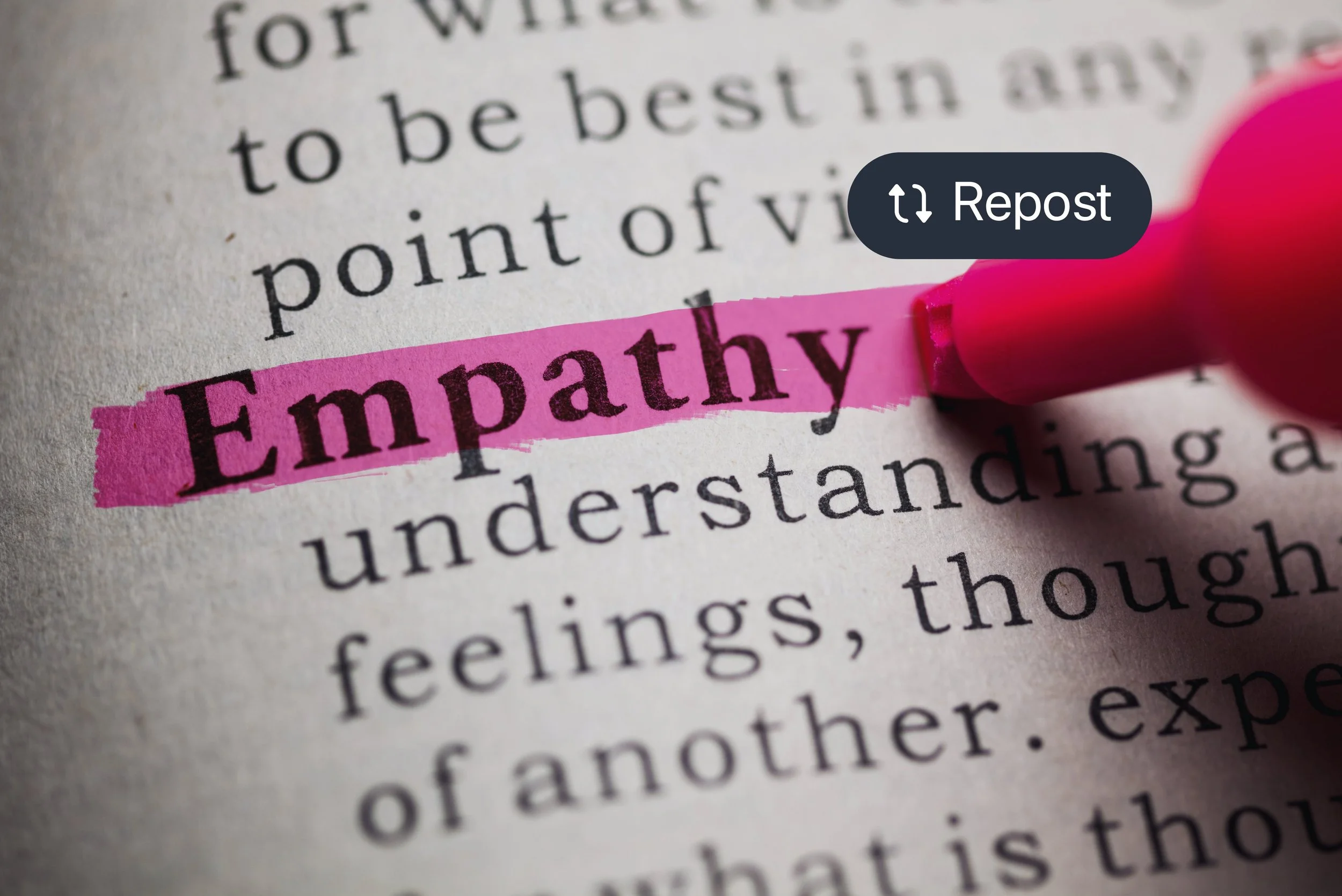Violence Isn’t Content: Restoring Empathy on Social Media
Hi! I’m Lyle Hendriks, lead copywriter at BNL Media Consulting and the author of this article. This is a quick note to let you know that this work was 100% human-written without the assistance of generative AI.
When you’re scrolling through your socials, what do you see? While your algorithm determines the exact nature of the content you’re served, there’s a good chance that some of it centres around shock, horror, tragedy, and violence. Whether it's videos of the devastation of Israel’s occupation and destruction of Palestine, footage from the trenches of Ukraine, or clips of Nepalese protestors facing off against military police in the streets, humanity’s penchant for violent conflicts has never been as visible as it is now.
Some argue that we should be seeing these atrocities, tragedies, and acts of senseless violence on our phones. We’re better informed than ever before. We can keep our finger on the global pulse, using what we see on our screens to form our worldviews and political leanings. But one thing that we also need to discuss is the dark side of seeing this content.
What is the psychic price we pay for being exposed to more violence, death, and destruction in a morning scroll than most humans would in a lifetime? What is the content-ification of violence doing to our sense of empathy? In this article, we’re diving into all this and more, exploring where we’re headed as platforms monetize tragedy through a propaganda-fueled money machine the likes of which the world has never seen.
The Role of Social Media in Political Violence
At the time of writing, political violence is the highly debated, revisionist term of the month. In the wake of the assassination of right-wing pundit Charlie Kirk, republicans are standing in staunch opposition to ‘political violence’ (assuming it doesn’t help them stay in power). But zooming out from this moment in time, let’s look at what political violence is, really.
Political violence can range from singular acts, such as the killing of Kirk or UnitedHealthcare CEO Brian Thompson in 2024. But it can also refer to greater movements for good and for evil, whether it’s the Arab Spring of the 2010s, the ongoing Israeli genocide in Palestine, the Nepalese ‘Gen Z revolution’ just a few weeks ago, or storming the US Capitol building and killing a police officer in the process. What do these events all have in common? They were platformed, propagandized, and presented to us through social media.
I had the misfortune of witnessing the up-close, uncensored assassination of Charlie Kirk minutes after it happened through an Instagram Reel. I’m not going to say Kirk was a hero, or even a good person. He was a transphobic, racist, hateful man who, ironically, believed that gun deaths were a necessary sacrifice in order to keep America’s Second Amendment. Does that mean he deserved to die? If you go by comments and content on socials, you’ll see that it’s a contentious question. The divide isn’t just between left and right-wingers (though that divide is as wide and deep as ever), but also between people who claim to condemn this form of violence wholesale and those celebrating it as a win.
Where does this divide come from? Why does it seem like more and more people expect, accept, even celebrate these moments of human brutality, even if they do align with their political beliefs? I believe the clue to this answer lies in my own reaction to witnessing Kirk’s untimely death through a phone screen: Desensitization.
Repetition and Desensitization
One of the most widely accepted methods of getting over an irrational fear is through exposure therapy. By continually exposing ourselves to things our brains find terrifying, we gradually become accustomed to seeing them, and before long, our fear of spiders, rats, snakes, or whatever else vanishes.
This concept applies to other things our brains can’t normally tolerate. Combat veterans eventually become desensitized to their daily reality of violence and destruction. Paramedics and doctors get used to watching their patients pass. Of course, not everyone can completely detach themselves from these experiences (the prevalence of post-traumatic stress disorder among these groups is proof of this), but in many cases, the human psyche shows remarkable abilities to adapt to even the most horrifying daily circumstances. But there’s a dark side to this ability to adapt to chaos and violence, and it stems from the fact that it’s never been more visible than ever.
Violence and Tragedy on Social Media
As I watched the clip of Charlie Kirk getting shot in the neck at a Utah university campus, I found myself surprised by my reaction. Yes, I was shocked. I wasn’t expecting the video to go this way—in fact, the news hadn’t even broken the story yet. But did I feel trauma? That instant, life-altering sense of panic, dread, and fear that I would have likely felt if I had been among the crowd in person? No.
To understand my reaction, I had to delve into the type of content that I see on a regular basis. Videos of Palestinian mothers standing in front of a bombed-out Gaza skyline, begging me for five seconds of my attention to help them make a few dollars from Instagram’s monetization. Drone footage of explosives falling onto wounded Russians curled up in foxholes. Even locally, videos of protestors in Montreal being shot point-blank with smoke grenades by armoured police officers, just a few blocks from where I live.
Of course, most of this content technically isn’t allowed on Instagram or other platforms. But with billions of reels to moderate, it’s no surprise that this violent, shocking content slips through the cracks so consistently.
And I’m not the only one seeing this stuff. After a recent experiment where I explored the way Instagram’s algorithm serves content to users who wipe their content preferences, I’ve been resetting my algorithm every couple of weeks to try to keep Instagram boring. A side effect of this is seeing a huge range of questionable and shocking content as the algorithm tries to figure out my preferences. These videos of violence have millions of views and hundreds of comments, a bona fide viral sensation manufactured out of the real suffering of real people.
Go back just a century or two, and we humans lived very different lives. You might see a hundred people in your entire life. Your social circle was limited to those in your community. If there were a war in a faraway land, you might only hear about it years after the fact. Tragedy existed, of course, and may have even come knocking at your door if you were unlucky. But we weren’t exposed to the suffering of billions, all available on demand in the same 16:9 aspect ratio as your favourite viral recipe, TikTok dance, or softcore thirst trap.
Today, we have the ability to not just learn about, but witness as much tragedy as we want. With apps like Instagram and TikTok maintaining some pretty lax content moderation policies, it’s no surprise that more and more people are becoming desensitized to images of extreme, real-world violence, even celebrating that violence when it aligns with their politics and worldview. When you consider how dominated these platforms are by young people with developing minds, it’s no wonder that our natural, human reactions to violence are becoming numbed, suppressed, and hardened.
How to Restore Empathy When Violence Becomes Content
This post was conceived after Charlie Kirk’s death. Not to honour his legacy or tearfully mourn his passing, but as an attempt to stop and reset. I didn’t like Charlie Kirk. I didn’t respect him. I won’t miss him. But I, along with so many others, watched him die without meaning to. Regardless of how I feel about the man, that has to mean something.
As highly publicized moments of violence and brutality become commonplace on social media, it’s vital that the rest of us using these platforms find new ways to engage with and around them.
As a social media marketing company, we’ve decided that a new approach is necessary when (and no longer ‘if’) these politicized, propagandized moments of violence take social media by storm. From now on, our policy is to talk to our clients as soon as we learn about what happened, letting them know that we’re going to push their posts back by a short period, usually between 24 and 48 hours. By ensuring we’re not pushing out content about e-commerce sales and webinar events amidst viral imagery of death and destruction, we can help to create more space around these moments, helping to recontextualize them as what they really are: low-grade collective trauma affecting millions at a time.
This new policy isn’t about mourning the life and work of certain people, or taking one side versus the other in times of political upheaval. It’s about zooming out and realizing that these are real humans living through real pain—not intangible characters distilled into content for our amusement. We hope that others in the social media sphere will join us in our approach to using these apps as they continue to platform political violence and suffering in the name of reach and engagement.
In such uncertain times, all we have is each other. And restoring that connection amongst one another begins with empathy.





